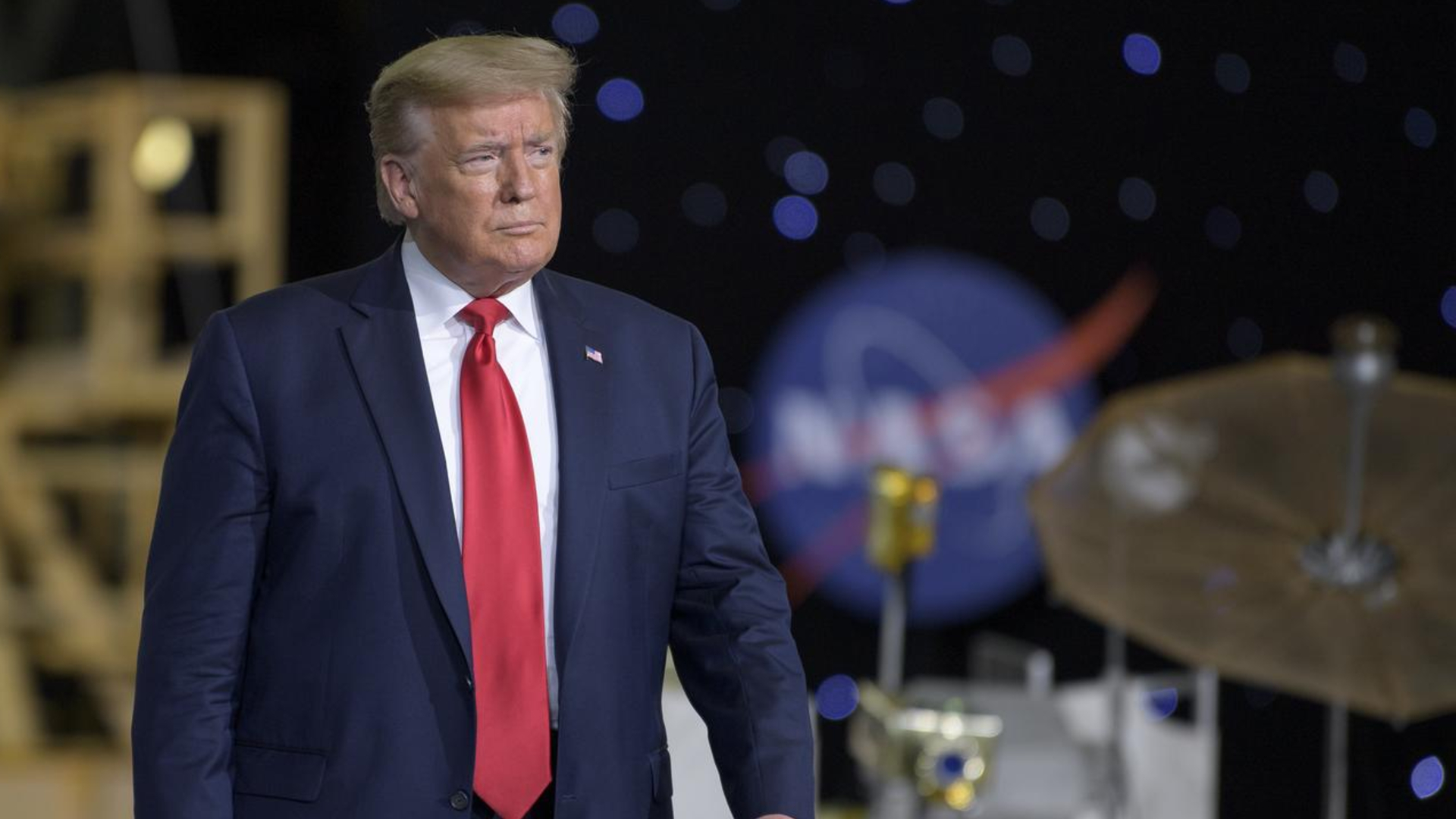Astronauts fly Albert Einstein doll to demo physicist's 'happiest thought'
"We're experiencing Einstein's happiest thought continuously," said Crew-5 pilot Josh Cassada.

Albert Einstein's "happiest thought" has been proven again by four international astronauts and a small doll made in his likeness.
Upon entering Earth orbit on Wednesday (Oct. 5), the crew members onboard SpaceX's Dragon spacecraft "Endurance" revealed their chosen "zero-g indicator," a plush toy of the late theoretical physicist. Floating at the end of a tether, the doll not only confirmed that the Crew-5 astronauts were safely on their way to the International Space Station, but that one of Einstein's ponderings was indeed true.
"A couple of years after he came up with his groundbreaking theory of special relativity, Einstein, in his mind, still had a couple of loose ends to tie up," Crew-5 pilot Josh Cassada, a NASA astronaut, U.S. Navy captain and physicist, radioed back to SpaceX's mission control in Hawthorne, California. "While he was sitting [at his job] in the patent office because he wasn't famous yet — [though he] definitely should have been — Einstein had what he said was one of his happiest thoughts of his entire life ... that a person in free fall could not feel his own weight."
"That thought, along with some others that he built upon, led to the general relativity and our understanding of gravitation and the curvature of space-time," said Cassada.
Related: SpaceX launches Crew-5 astronauts on historic flight to space station for NASA
A tradition first started by Soviet-era cosmonauts and later adopted for SpaceX crewed spaceflights, zero-g indicators signal to the still strapped-into-their-seats crew members that they have entered orbit — or are in free fall around Earth — such that they experience weightlessness. Einstein had his "happiest thought" in 1907, more than 50 years before the first human launched into space.
"We're experiencing Einstein's happiest thought continuously, as the International Space Station has been doing for over 20 years," said Cassada. "On Crew-5, we call this little guy our 'free-fall indicator.' We're here to tell you that there's plenty of gravity up here. In fact, that is what keeping us in orbit right now and preventing this trip on Crew Dragon from being a one-way trip."
Breaking space news, the latest updates on rocket launches, skywatching events and more!
Crew-5's free-fall indicator was made by The Unemployed Philosophers Guild, a specialty shop offering "thoughtful gifts for thinking people," as part of its "Little Thinker" line of dolls. The 11-inch-tall (28-cm) Albert Einstein plush, dressed in a gray sweater and black pants, features the physicist's trademark unruly white hair.
Einstein has now joined a small but growing collection of dolls that have flown on SpaceX missions to the space station. Previous zero-g indicators have included a plush Earth globe, a sequined dinosaur, a toy Grogu ("Star Wars"' "baby Yoda"), a baby penguin, a couple of turtles, a stuffed dog and a monkey.
The Einstein doll, together with Cassada, Crew-5 commander and first Native American woman in space Nicole Mann, Japanese astronaut Koichi Wakata and Anna Kikina, Russia's only active female cosmonaut, are scheduled to arrive at the space station on Thursday evening.
"A little bit like life, we live in the same world, we live in the same universe," said Cassada. "Sometimes we experience it in a very different way from our neighbors. If we can all keep that in mind, we can all continue to do absolutely amazing things and do it together."
SpaceX's flight controllers thanked Cassada for sharing his sentiments, as well as the meaning behind the Crew-5 "stowaway."
"My crewmates are just happy that we didn't break out a dry erase board and get into more detail," replied Cassada with a smile.
Follow collectSPACE.com on Facebook and on Twitter at @collectSPACE. Copyright 2022 collectSPACE.com. All rights reserved.

Robert Pearlman is a space historian, journalist and the founder and editor of collectSPACE.com, a daily news publication and community devoted to space history with a particular focus on how and where space exploration intersects with pop culture. Pearlman is also a contributing writer for Space.com and co-author of "Space Stations: The Art, Science, and Reality of Working in Space” published by Smithsonian Books in 2018.
In 2009, he was inducted into the U.S. Space Camp Hall of Fame in Huntsville, Alabama. In 2021, he was honored by the American Astronautical Society with the Ordway Award for Sustained Excellence in Spaceflight History. In 2023, the National Space Club Florida Committee recognized Pearlman with the Kolcum News and Communications Award for excellence in telling the space story along the Space Coast and throughout the world.


